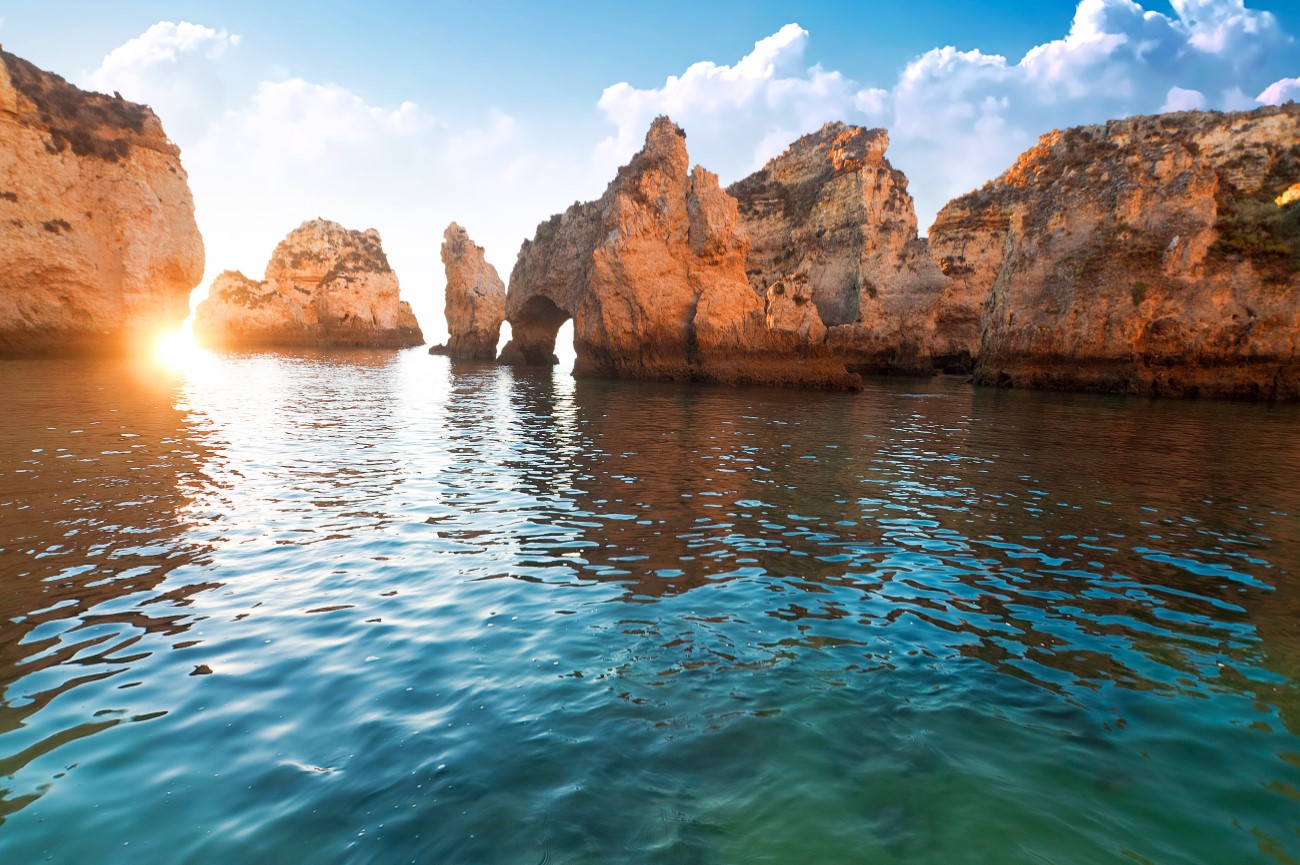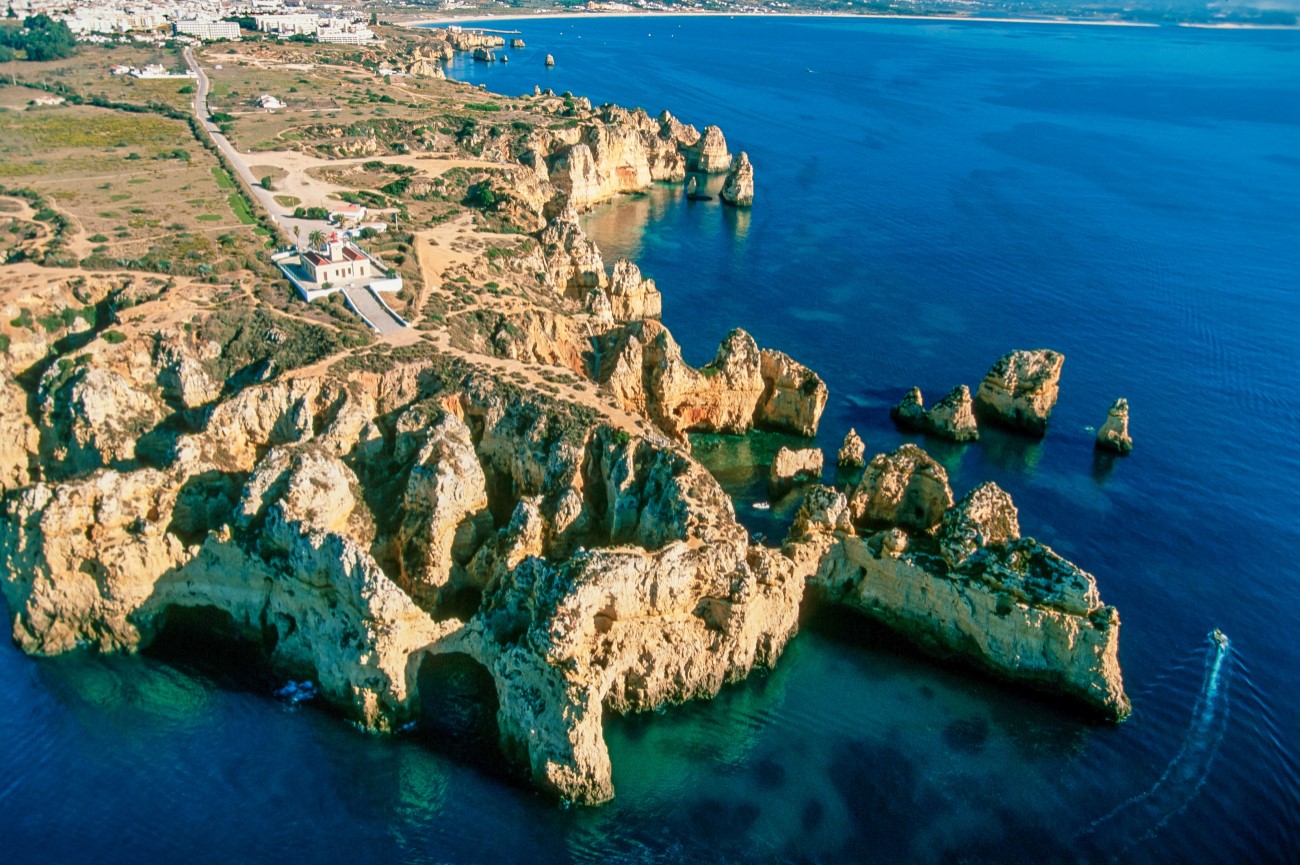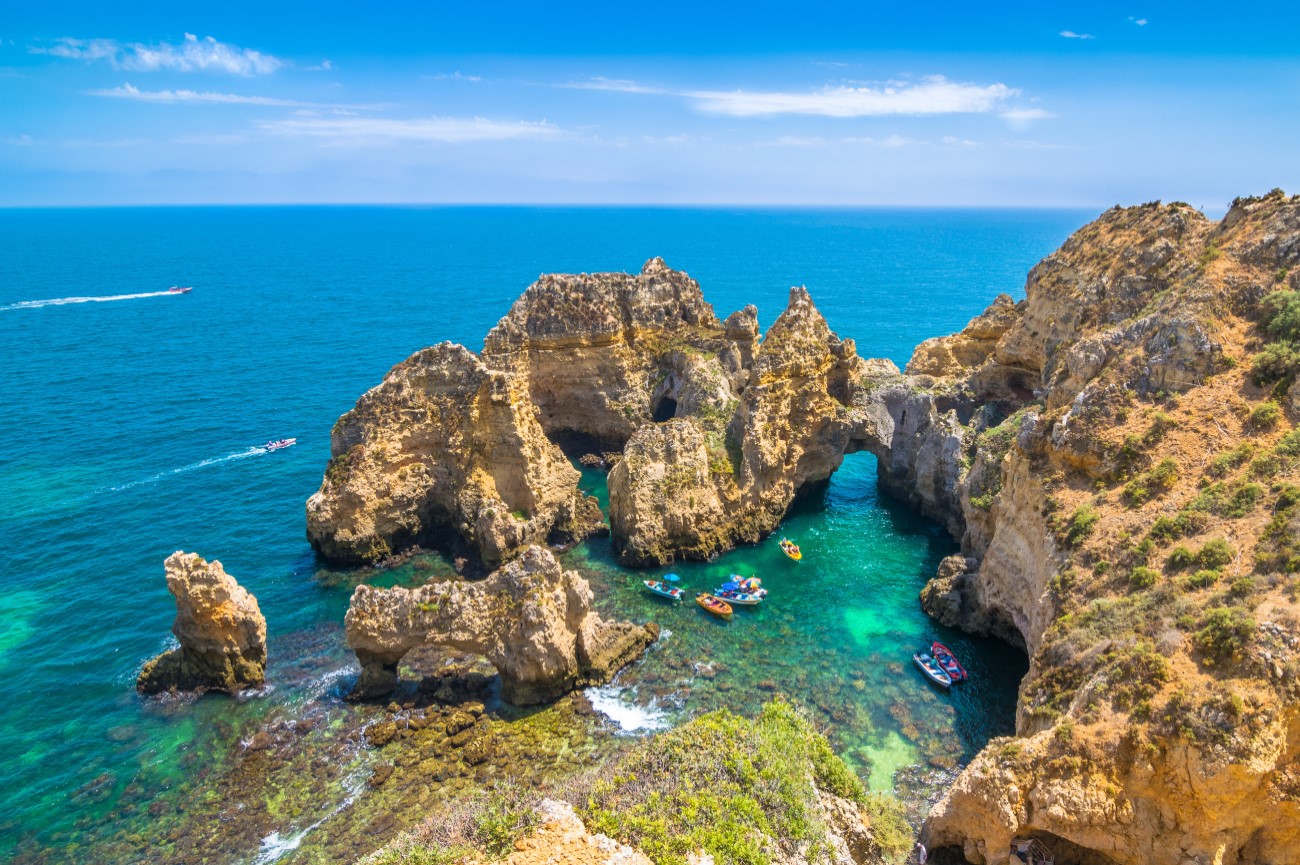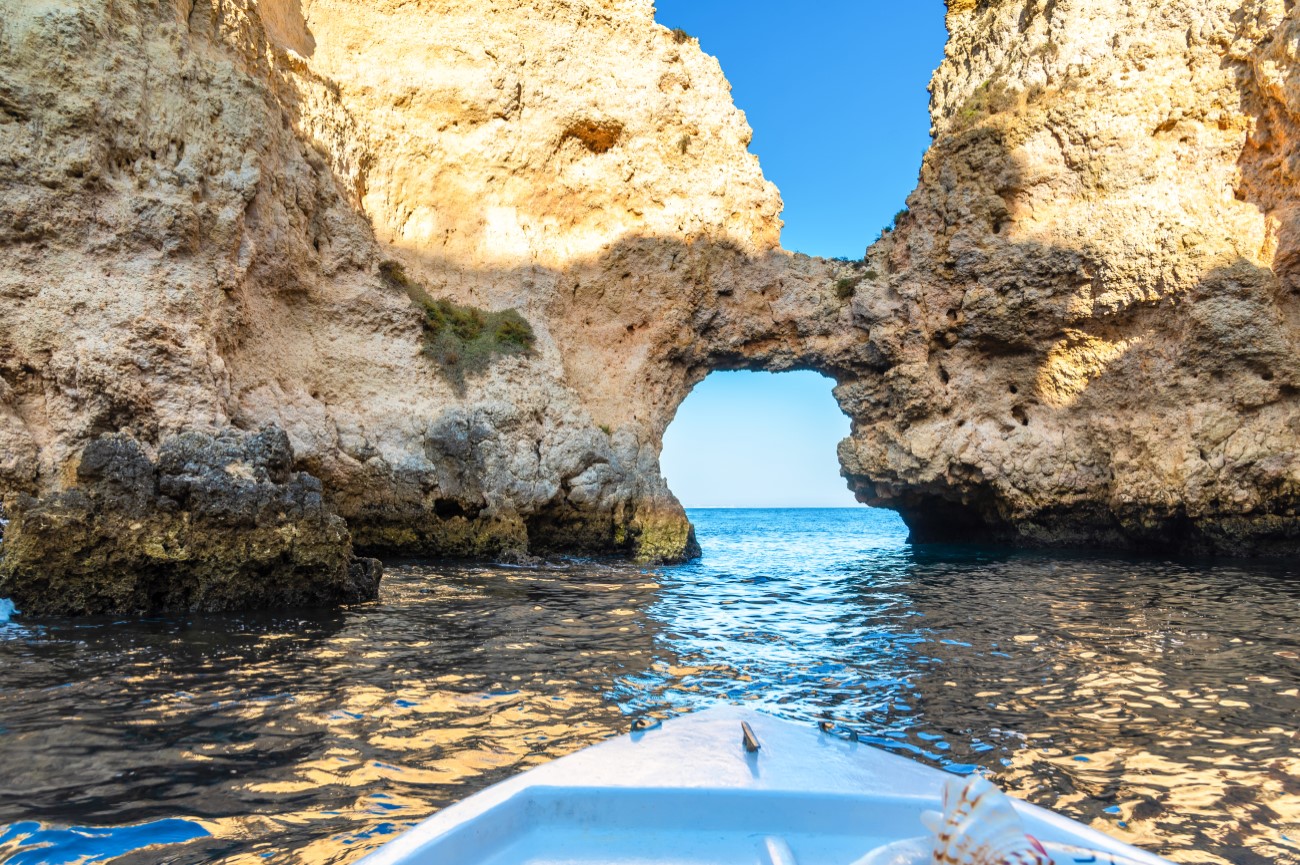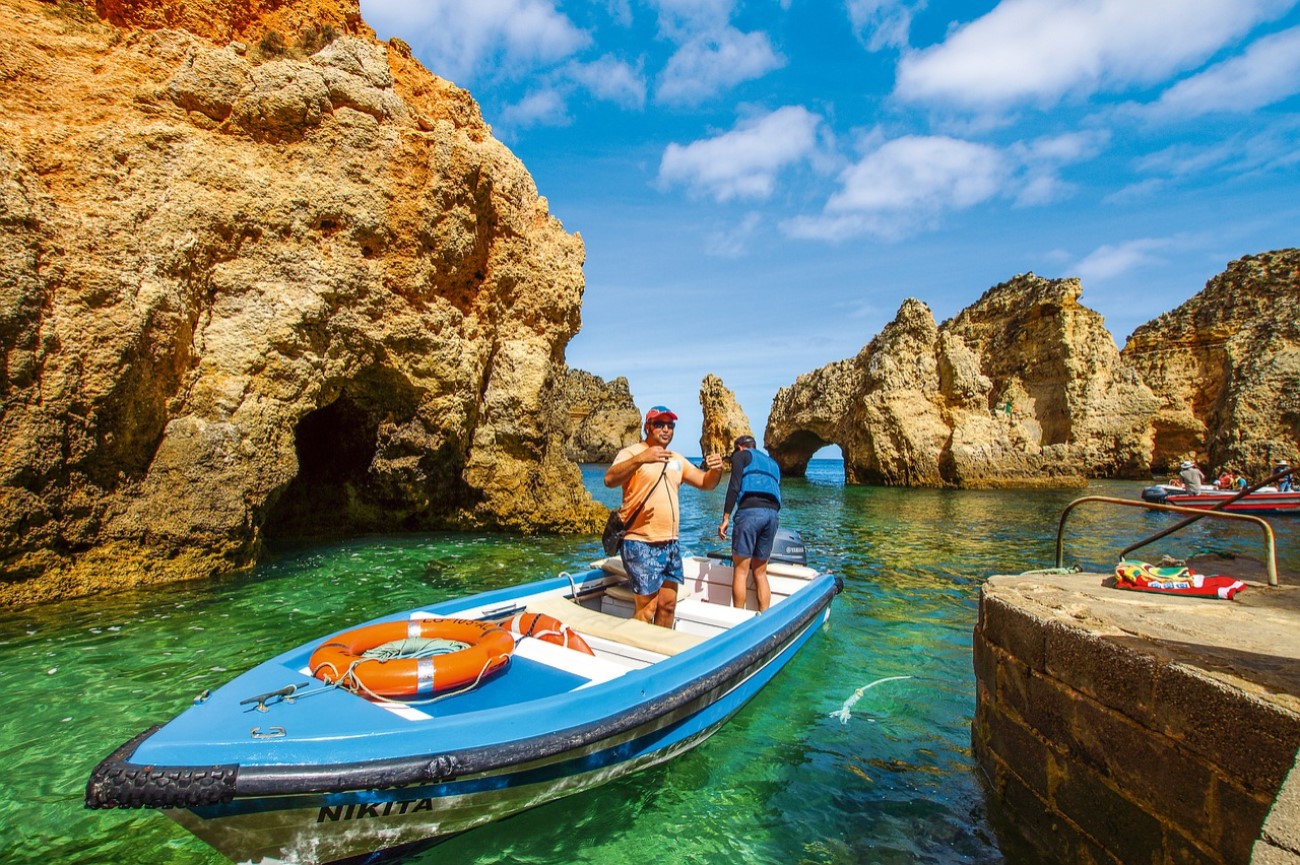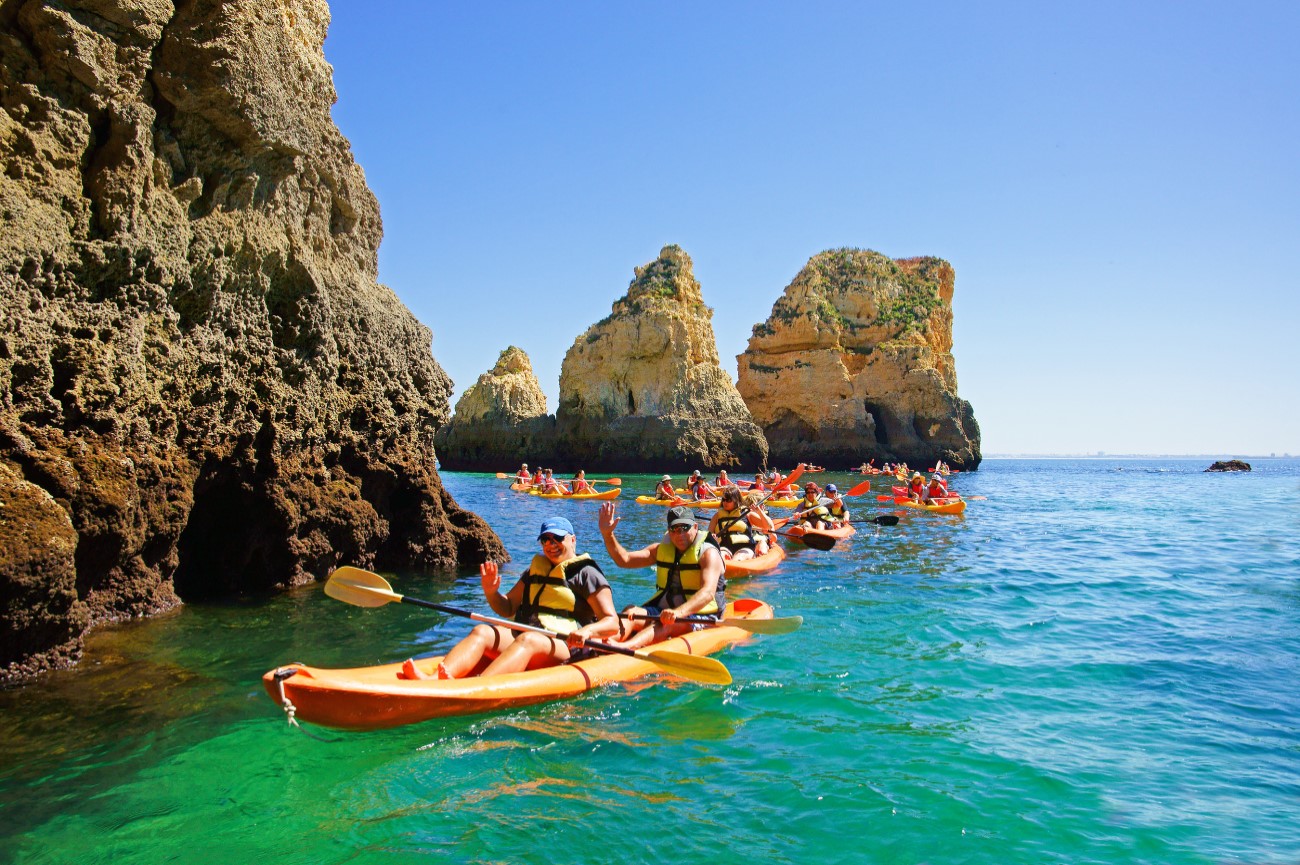Ponta da Piedade: Your Beach Guide
If you are staying in or around the city of Lagos, then you simply must make your way down to the beautiful beaches of Ponta da Piedade.
Since
there is no sand at Ponta da Piedade, the name is a bit of a misnomer.
However, this popular Lagos attraction offers visitors the chance to see
awe-inspiring rock features right along the coast.
Ponta da
Piedade, which translates to “Piety Point”, is located along the Algarve
coastline and is a collection of geologically-detailed rock formations.
Millions of years of erosion have sculpted these limestone walls in unique ways. Some of the cliffs reach up to 20 meters high, and the area is filled with caves, grottoes, sea arches and rock faces that are perfect for climbing.
These rock formations are one of Portugal’s most visited tourist attractions and are a great adventure spot. There are several ways to access them, including hiking around them, by kayak, stand up paddleboard, or boat tour. When in the bays, visitors can spend the day snorkeling in the crystal clear water, spelunking and so much more.
If you are near the city of Lagos or are headed there in the future, here’s what you’ll need to know to properly plan your trip to Ponta da Piedade:
Getting to Ponta da Piedade
A car ride to Ponta da Piedade is only seven minutes from the center of Lagos and if you do not have a rental, you can use the local taxi company Taxiarade.
It is also possible to reach the cliffs on foot. If you visiting one of the nearby beaches, Praia do Pinhao, Praia D. Ana, and Praia Camillo you can’t help but see the towering cliffs. There are several paths that lead to the cliff tops which, if taken, will give you an amazing view of the Atlantic Ocean and the coastline below. From Lagos, the walk to Ponta da Piedade will take about 40 minutes but it will be a pretty spectacular 40 minutes.
Visiting Ponta da Piedade from the water is one of the best ways to take in its natural wonders. Several boat tours are available from Lagos. All you have to do is walk down to the seafront and visit one of the tour stalls that are set up there. From there, spectacular sites are only a short boat ride away.
Even if you arrive via dry land, you can descend the 182 stairs down to the water where you’ll be able to explore the grottoes and lagoons while getting a better sense of the size and scale of the rock formations.
Exploring Ponte da Piedade
Depending on the experience you’re hoping to have, there are a few ways to explore Ponte da Piedade.
You
can do a self-guided exploration or take a local tour. Again, the type
of tour you choose will depend on the type of experience you’re looking
to have.
If you want to get up close and personal with the rock
formations, sea caves, grottoes, and lagoons, look for a tour that goes
out in small boats. This will give you more opportunity to get close. It
is also possible to do a kayak tour.
Some tours will only take you to the most popular/famous grottoes while others may have their own preferred route. Before you choose, ask. Inquire about the route, duration of the tour, and what is and is not included in the price. For example, will a snack be provided on the boat?
If you are hoping to take your time and have a truly unique experience, it is possible to explore Ponte da Piedade all on your own.
Well-known rock formations
The rocks along the Ponte da Piedade cliffs jut out in numerous areas.
These
types of rock formations were created when the wind and waves eroded
the rock, over time, creating stunning features like arches, rounded
rock edges, and other fascinating shapes.
Some of these formations are actually quite famous but you’ll need to be at the right vantage point to see them properly.
Over
the years, many of the local fishermen have named the formations. A few
notable sites include o elefante (the elephant), the kissing couple,
cabeça do camelo (camel head), o submarino (the submarine), a cathedral
(the cathedral), a cozinha (the kitchen), o chaminé (the chimney), the
Sphinx, Belas-artes (fine arts), museu (museum), and General de Gaulle.
Grottoes
Naturally occurring grottoes are small caves that are near water and
their access is generally limited to low tide. Grottoes are usually
geographically made of limestone and their features corrode over time
due to the shifting tides and other natural weather changes.
Therefore,
accessing grottoes can be tricky. Many of the grottoes can only be
accessed by kayak or small boat and must be timed according to the
tides.
There are also well-known grottoes, such as the gruta dos
amores (the grotto of love), which can only be reached by kayak or
boat.
Boating
Boats can be hired while in Lagos, but sometimes there are boats at the
bottom of the stairs in Ponta da Piedade. Once you descend the stairs,
you should be able to hire a local boat seated at the edge that can take
you into the caves.
There are a variety of options for boat
tours. Some go out all day, and others offer shortened trips. Generally,
the larger the group, the longer it will take. Typically, you can
request that the boat visits as many rock sculptures, grottoes, caves or
sea arches as you would like.
Kayaking & SUPing
Some of the grottoes are only accessible by smaller watercraft. Generally, travelers will enter by kayak, but a stand-up paddleboard is also a fun and enjoyable way to explore these rock formations.
When kayaking or SUPing, try to bring along snorkeling gear as well. You can easily leave the kayaks on the secluded beach of Praia da Balança and head out to snorkel in the caves.
Locals also offer kayak tours. With a kayak tour, you will be close to the water and can still experience the local knowledge while exploring some of the unique areas. A kayak tour will also provide safe transport so you don’t have to worry about whether or not it is safe to paddle out. This is also a great option for those who are not strong kayakers but want to explore the water by paddle.
Snorkeling
Since the water is so clear, you’ll want to go snorkeling. If you end up taking a boat into the Ponta da Piedade, you can request a cruise that allows time for snorkeling. This is a great way to experience the crystal clear water of the Ponta da Piedade. Otherwise, make sure to bring along a snorkel, mask and optional fins if you plan to get into the water.
The lighthouse
At 51 meters above sea level, you could also visit the stone lighthouse that was built in 1913 to serve as a watchtower for local ships. It took 30 years to get this lighthouse established since it rests on the hermitage of an old Portuguese church, the Nossa Senhora da Piedade hermitage. The local parish at the time had blocked work on the building because the construction would the hermitage remains.
Now, the lighthouse still operates and it flashes a white light automatically every seven seconds. The lighthouse is a beacon to all who visit this area, and a must-see for any traveler.
What to expect at Ponta da Piedade
Located less than 4 hours from Lisbon, 1 hour from Faro, and nestled at the southern tip of Portugal, the cliffs of Ponta da Piedade and the town of Lagos are a frequent summer getaway.
Naturally, since this destination is located so close to the equator, summers can get extremely warm. Summer will also be the busiest time of the year. If that’s your thing, then you will love what Ponta da Piedade and Lagos have to offer.
There are a handful of limestone formations along the south of Portugal. Some plan a trip to visit Ponta da Piedade and Lagos knowing that there are lots of incredible things to see and do in the area.
Not far from Ponta da Piedade is the popular beach and resort town of Praia da Rocha. Come for the beach, stay for the fun and exciting nightlife. With so many great bars and restaurants in town, you’ll never be bored -- or hungry! Also nearby is the town of Portimao, the beaches of Praia da Marinha, and the extremely popular Benagil Cave.
If you plan to stay in Ponta da Piedade for a few days, then you will end up staying in Lagos. And we highly recommend at least a day or two to enjoy this beautiful and culturally rich city.
To plan your trip to the Algarve region and get the most out of a trip to Ponta da Piedade, give us a call today!


